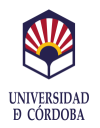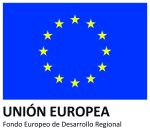Gestión Integrada para el control de aportes de agua y sedimentos en Sistemas de Embalses en la cuenca del Guadalquivir
Effective, efficient and sustainable management of water resources and the environment is one of the challenges facing society in the current context of global warming and the Water Framework Directive. In Spain, most of the water to supply the demand for different uses (urban, agricultural, hydroelectric and ecological) comes from surface reservoirs. However, numerous external and internal factors can limit at different time scales the water quality conditions available in reservoirs: 1) the different origins and regimes of water inflows and associated substance loads that a reservoir receives, 2) the internal dynamics of the system’s water body and transport processes, 3) as well as the influence of reservoir management and operation on the water quality conditions in the reservoir (Amirkhani et al., 2016; Rodriguez et al., 2019; Zhang et al. 2019; Song and Zhang, 2020). In this regard, there is in Andalusia, and specifically in the Guadalquivir river basin, a relevant problem of sediment inputs throughout the upper basin of the river, which shows a cascade of reservoirs clogged to 70-96% of their capacity (Marmolejo-Pedro Marín-Doña Aldonza-Puente de la Cerrada) and which has its origin in the high erosion rates favored by land uses that leave the land surface partially or totally uncovered and in the location and complex orography of the basin that favors extreme rainfall events (Bohórquez et al. , 2015, Polo et al., 2016). This problem, not only affects reservoir management in the upper and middle reaches of the river, but is also evident in the lower section of the river, the estuary, generating episodes of persistent turbidity that endanger the fragile balance of an ecosystem already punished by the pressure of overt human intervention in the area (Contreras et al., 2012; Carpintero et al., 2013; Contreras, 2013; Ruiz et al., 2016; Caballero and Ruiz, 2018).
To characterize and quantify the influence of each of the factors affecting reservoir water quality at each of their significant scales and their interactions, there are different approaches and calculation and modeling tools at the individual level. At the global level, however, a joint framework is required that
tools with the spatial and temporal resolution appropriate to each scale of work, from water circulation to ecological dynamics through the processes that control sedimentation and that depend on sedimentation. sedimentation that depend on the physical, chemical and biological characteristics of the system. biological characteristics of the system. Nowadays, the availability of local and remote information, as well as the computational and remote information, as well as computational capabilities, offer methodological possibilities that can be scientific models into efficient decision making schemes in routine operation and management tasks. and system management tasks, at user level without renouncing to the capabilities that knowledge provides (Singh, 2001). capabilities that knowledge provides (Singh, 2018; Yiang et al.,)
The project proposes a series of actions aimed at developing four specific objectives, all of them in line with the Sustainable Development Goals (SDGs) concerning all of them in line with the Sustainable Development Goals (SDGs) related to clean water and sanitation. Clean water and sanitation. The following is a description of the defined objectives:
- O1. To have tools for estimating the different sediment loads received by reservoirs at the time scales of interest.
- O2. To generate reservoir models that allow estimating, at different time scales, the evolution of the quality of the water supplied.
- O3. Determine the influence of reservoir management and operation on the discharge regimes and quality dynamics of the system.
- O4. Implement and validate these tools in an operational scheme that communicates with existing or future monitoring and sampling systems. future.
Sample Text
- María José Polo Gómez (PI) – University of Córdoba
- Cristina Aguilar Porro – University of Córdoba
- Rafael Pimentel Leiva – University of Córdoba
- Eva Contreras Arribas – University of Córdoba
- Javier Aparicio Ibáñez – University of Córdoba
- Pedro Torralbo Muñoz – University of Córdoba



